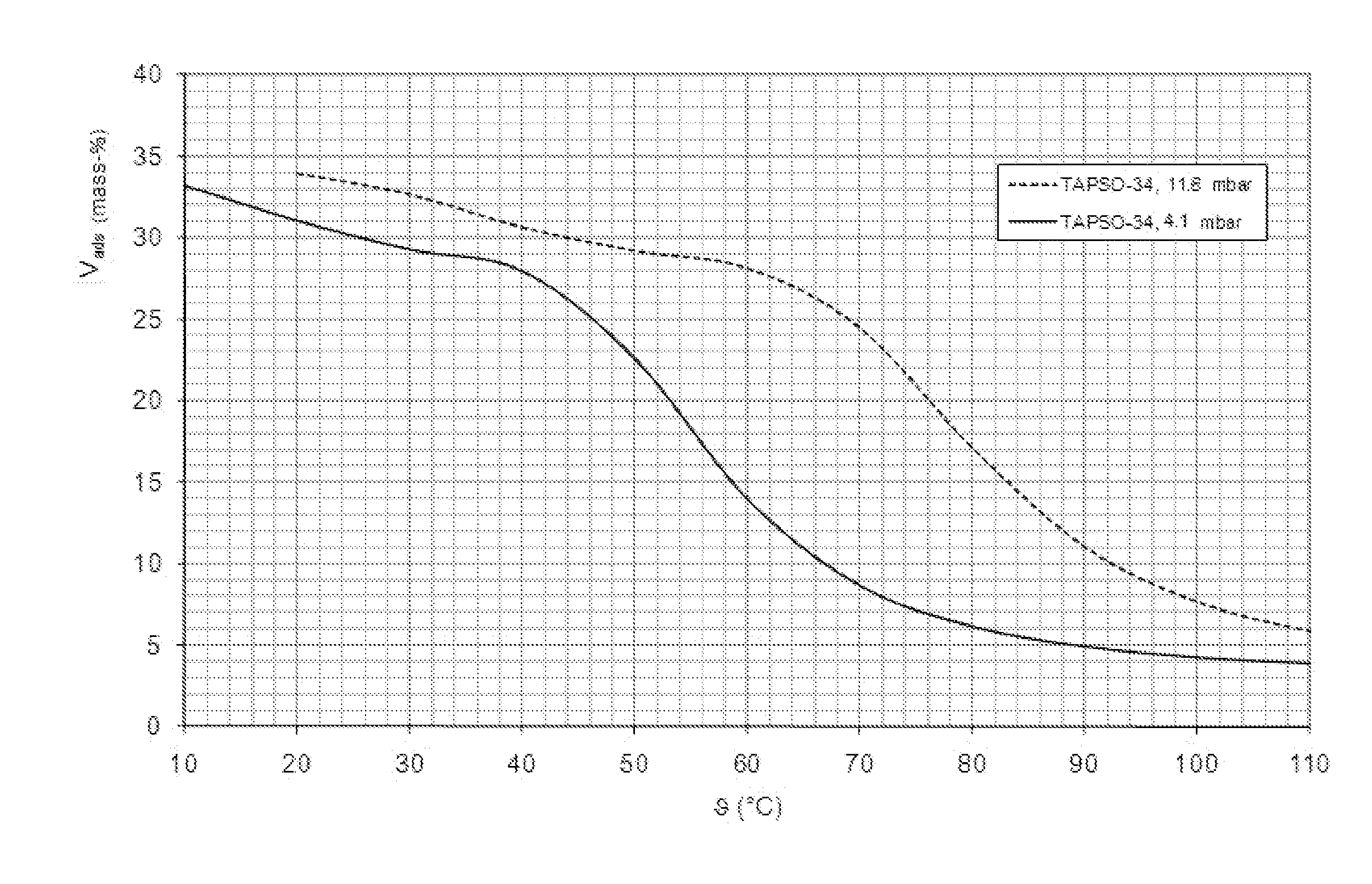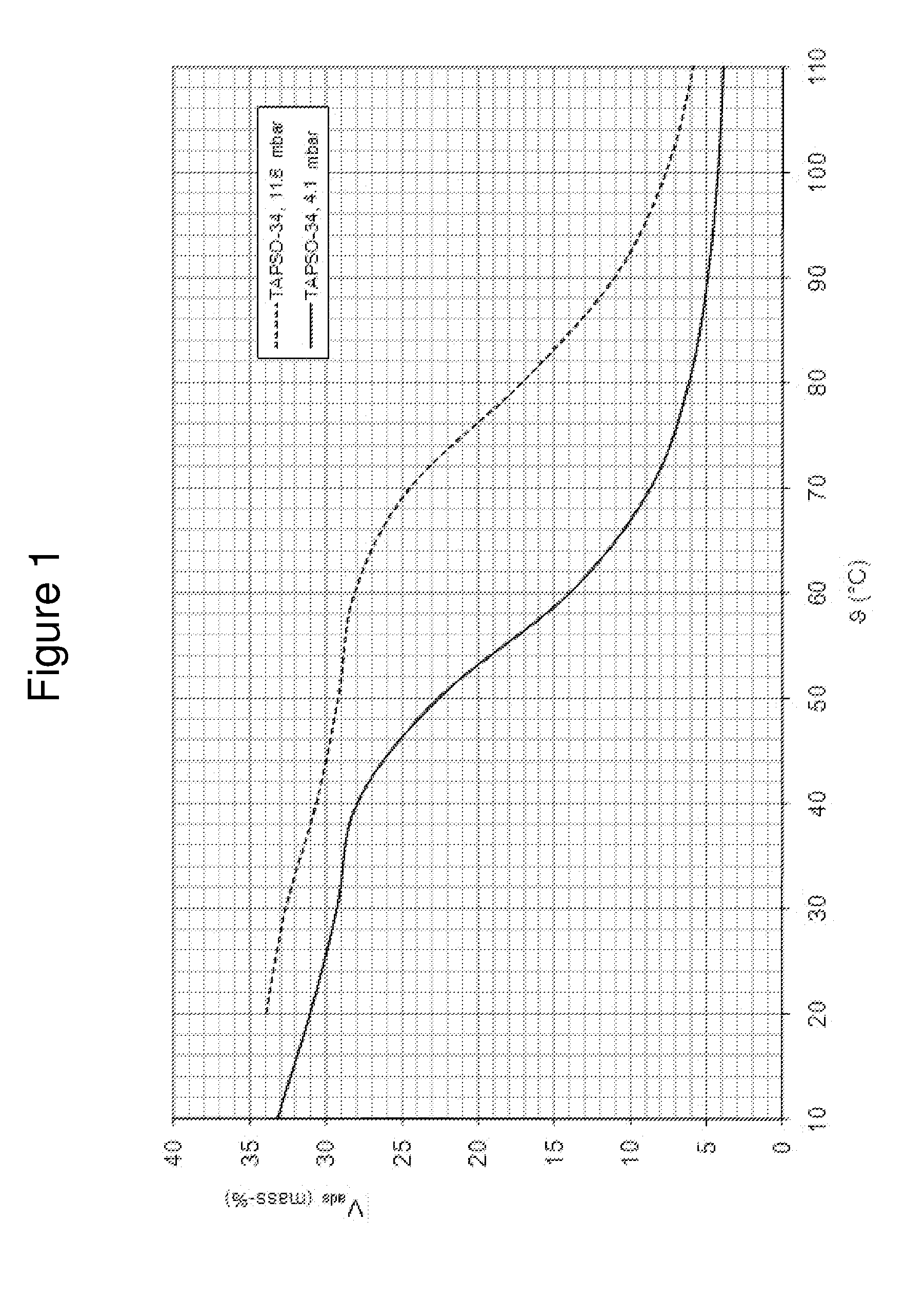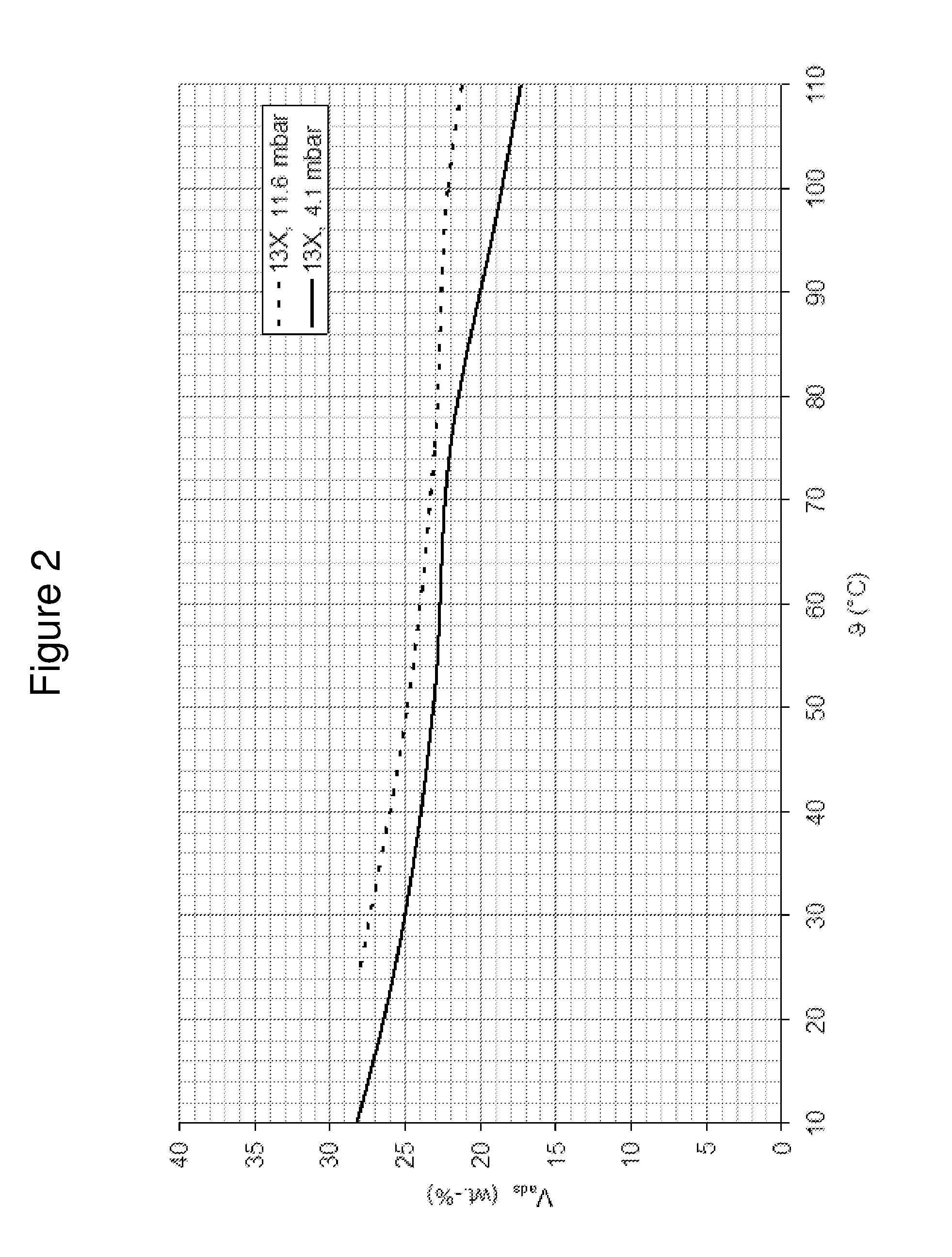Thermal management by means of a tatano-alumo-phosphate
- Summary
- Abstract
- Description
- Claims
- Application Information
AI Technical Summary
Benefits of technology
Problems solved by technology
Method used
Image
Examples
Example
SYNTHESIS EXAMPLE 1
[0120]100.15 parts by weight deionized water and 88.6 parts by weight hydrargillite (aluminium hydroxide SH10) were mixed. 132.03 parts by weight phosphoric acid (85%) and 240.9 parts by weight TEAOH (tetraethylammonium hydroxide) (35% in water), as well as then 33.5 parts by weight silica sol and 4.87 parts by weight silicon-doped titanium dioxide were added to the obtained mixture, with the result that a synthesis mixture with the following composition was obtained:
[0121]A synthetic gel mixture with the following molar composition was obtained:
Al2O3:P2O5:0.3SiO2:0.1TiO2:1TEAOH:35H2O
[0122]The synthetic gel mixture with the above composition was transferred into a stainless-steel autoclave. The autoclave was stirred and heated to 180° C., wherein this temperature was maintained for 68 hours. After cooling, the obtained product was filtered off, washed with deionized water and dried in the oven at 100° C. An X-ray diffractogram of the obtained product showed that t...
Example
EMBODIMENT EXAMPLE
[0133]TAPSO-34 was used in the embodiment example.
[0134]The series of tests at 4.1 mbar water vapour pressure show, for low temperatures of from 10° C. to 40° C., that a lot of water is adsorbed. The values of the adsorbed water here lie in a range of from 30 wt.-% to approx. 35 wt.-% (see FIG. 1).
[0135]If the temperature is increased, the adsorption rate of adsorbed water falls from 30 wt.-% to approx. 5 wt.-% in the temperature range of from 40° C. to 70° C. (FIG. 1).
[0136]In contrast, in the temperature range of from 80° C. to 110° C. the adsorption rate of adsorbed water barely falls at all. In this temperature range, the adsorption rate remains relatively constant, at approximately below 5 wt.-% of adsorbed water (FIG. 1).
[0137]At a higher water vapour pressure of 11.6 mbar (FIG. 1, dashed line), the fall in the adsorption rate is delayed. In the temperature range of from 20° C. to 60° C., the adsorption rate of the adsorbed water remains relatively constant a...
PUM
| Property | Measurement | Unit |
|---|---|---|
| Temperature | aaaaa | aaaaa |
| Temperature | aaaaa | aaaaa |
| Temperature | aaaaa | aaaaa |
Abstract
Description
Claims
Application Information
 Login to View More
Login to View More - R&D
- Intellectual Property
- Life Sciences
- Materials
- Tech Scout
- Unparalleled Data Quality
- Higher Quality Content
- 60% Fewer Hallucinations
Browse by: Latest US Patents, China's latest patents, Technical Efficacy Thesaurus, Application Domain, Technology Topic, Popular Technical Reports.
© 2025 PatSnap. All rights reserved.Legal|Privacy policy|Modern Slavery Act Transparency Statement|Sitemap|About US| Contact US: help@patsnap.com



